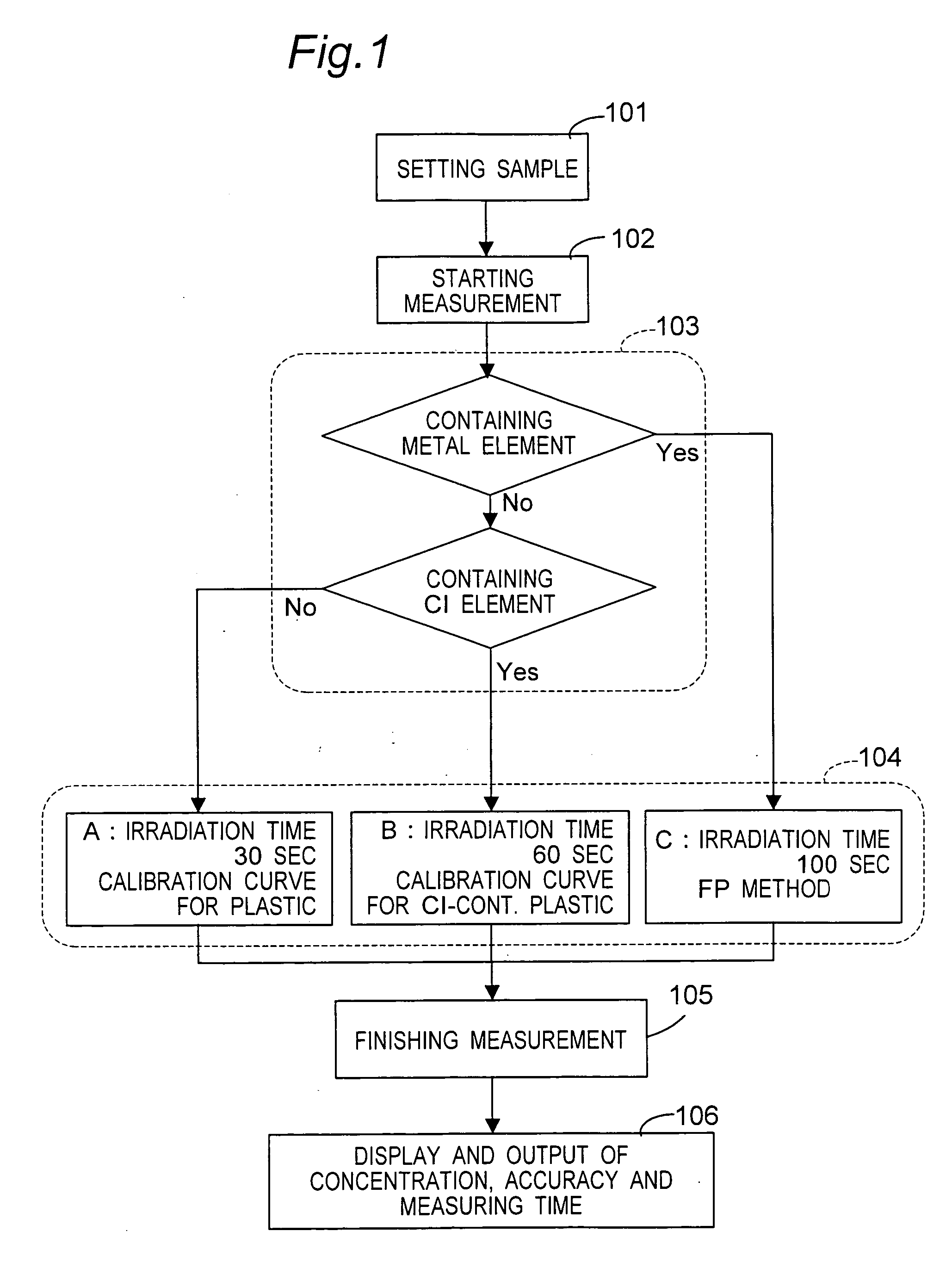Fluorescent X-ray analysis method and fluorescent X-ray analysis apparatus
- Summary
- Abstract
- Description
- Claims
- Application Information
AI Technical Summary
Benefits of technology
Problems solved by technology
Method used
Image
Examples
Embodiment Construction
[0036] According to the method of the present invention, an operator starts a measurement without previously setting measuring conditions, and carries out a short time irradiation of an X-ray at the initial stage of the measurement to detect and analyze an emitted fluorescent X-ray so that the rough composition of a sample is analyzed. The obtained rough composition is checked against, for example, a database hold in a fluorescent X-ray analysis apparatus, and the optimal measurement conditions are selected from the database depending on the composition. The measurement is continued under the selected conditions so as to display or output the concentrations of one or more particular elements contained in the sample and the accuracy thereof. The analysis for selecting the measuring conditions may be referred to as a preliminary measurement and the analysis under the selected measuring conditions may be referred to as a substantive measurement or a main measurement. The method of the ...
PUM
 Login to View More
Login to View More Abstract
Description
Claims
Application Information
 Login to View More
Login to View More - R&D
- Intellectual Property
- Life Sciences
- Materials
- Tech Scout
- Unparalleled Data Quality
- Higher Quality Content
- 60% Fewer Hallucinations
Browse by: Latest US Patents, China's latest patents, Technical Efficacy Thesaurus, Application Domain, Technology Topic, Popular Technical Reports.
© 2025 PatSnap. All rights reserved.Legal|Privacy policy|Modern Slavery Act Transparency Statement|Sitemap|About US| Contact US: help@patsnap.com



